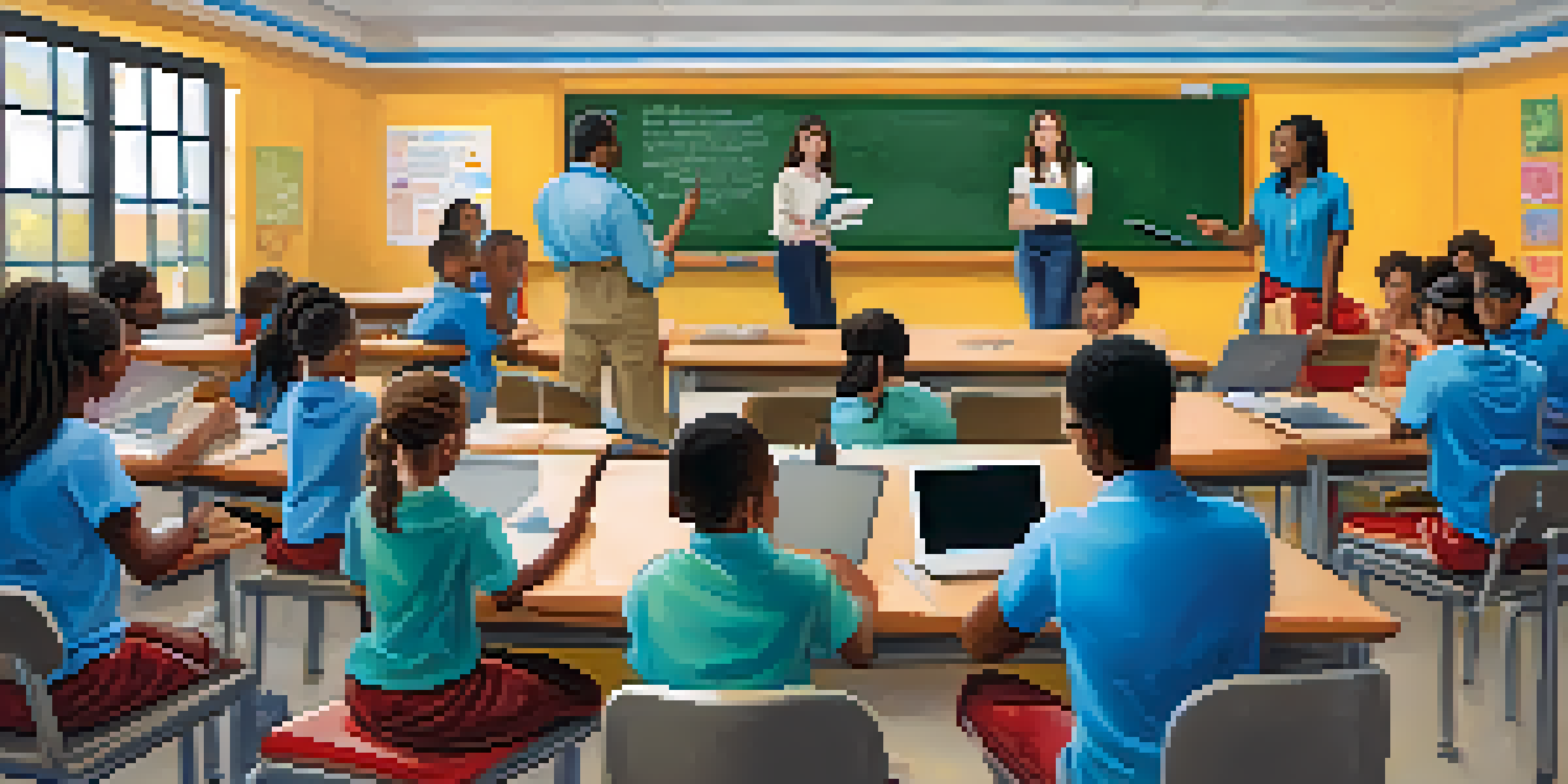Blended Learning and Cultural Competence in Education

Understanding Blended Learning in Education
Blended learning combines traditional face-to-face teaching with online instruction, creating a dynamic educational environment. This approach allows teachers to leverage technology while maintaining personal interaction, making learning more flexible and accessible. For example, students might attend lectures in person but complete assignments or engage in discussions online, blending the best of both worlds.
The Importance of Cultural Competence
Cultural competence refers to the ability to understand, respect, and effectively interact with individuals from diverse backgrounds. In education, this skill is vital as classrooms become increasingly multicultural. Educators equipped with cultural competence can create inclusive environments that acknowledge and celebrate diversity, leading to better student engagement and success.
Blended Learning Enhances Flexibility
Blended learning merges traditional teaching with online instruction, making education more flexible and accessible for students.
How Blended Learning Supports Cultural Competence
Blended learning can enhance cultural competence by providing diverse resources and perspectives. Online platforms often offer varied content, allowing students to explore different cultures and viewpoints at their own pace. This exposure not only broadens their understanding but also fosters empathy and respect for others, which are key components of cultural competence.
Engaging Students with Diverse Learning Styles
One of the strengths of blended learning is its ability to cater to different learning styles. For instance, visual learners can benefit from videos and infographics, while auditory learners may prefer podcasts or discussions. By incorporating various formats, educators can engage all students, promoting a deeper understanding of diverse cultures and perspectives.
Cultural Competence Is Essential
Understanding and respecting diverse backgrounds is crucial for creating inclusive educational environments that boost student engagement.
Real-World Applications of Blended Learning
Blended learning has been successfully implemented in various educational settings, showcasing its effectiveness. For example, schools that utilize project-based learning in a blended format allow students to collaborate on projects that explore cultural differences. This hands-on approach not only enhances learning but also encourages teamwork and intercultural communication.
Professional Development for Educators
To effectively implement blended learning and foster cultural competence, educators require ongoing professional development. Training programs can equip teachers with the tools and strategies needed to integrate technology while respecting cultural diversity. By investing in educators, schools can create a more inclusive learning environment that benefits all students.
Ongoing Training for Educators Needed
Professional development for educators is vital to effectively implement blended learning and nurture cultural competence in the classroom.
Challenges of Blended Learning and Cultural Competence
Despite its benefits, blended learning comes with challenges, particularly in promoting cultural competence. Not all educators are familiar with the technology or the cultural dynamics of their students. Addressing these challenges requires a supportive environment where teachers can share experiences and learn from one another, ultimately enhancing the educational experience for everyone.
The Future of Education: Blended Learning and Inclusivity
Looking ahead, the integration of blended learning and cultural competence is crucial for the future of education. As classrooms continue to diversify, the ability to adapt and respond to various cultural needs will be essential. By embracing these approaches, educators can prepare students for a globalized world, fostering a more inclusive and understanding society.